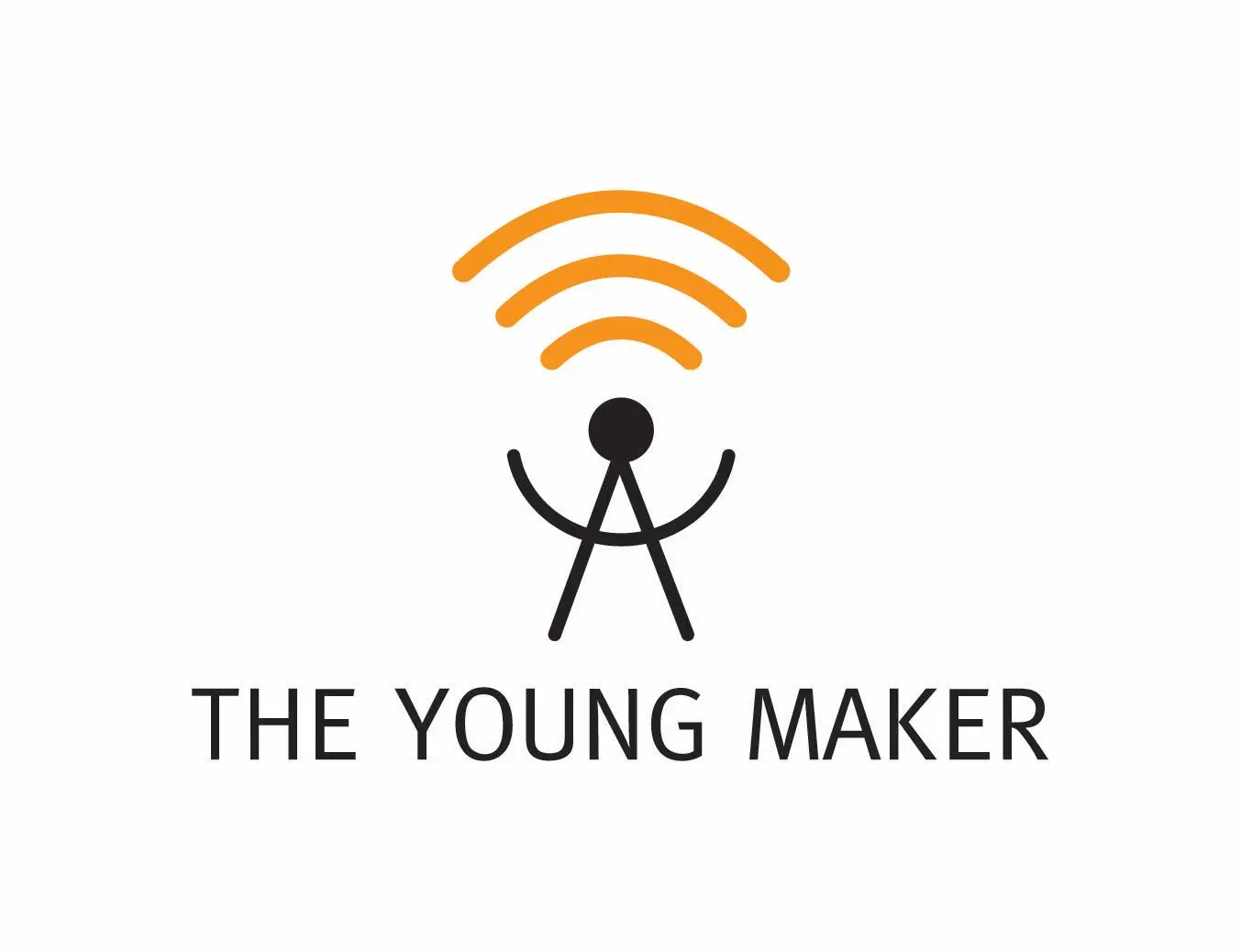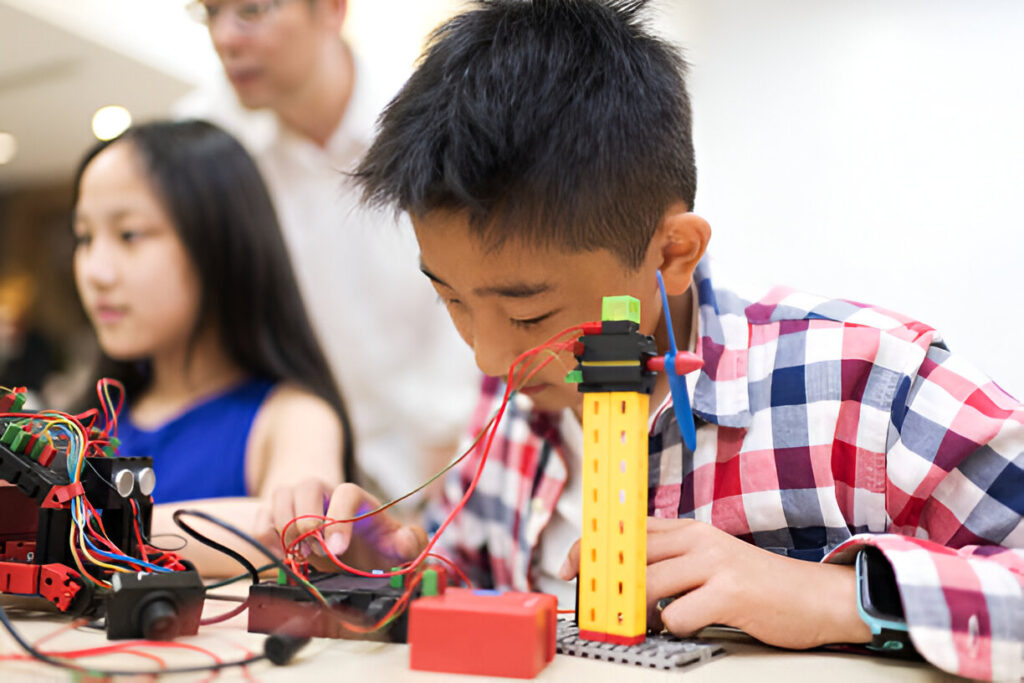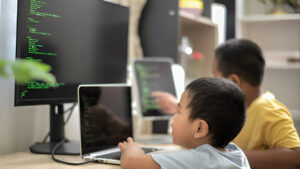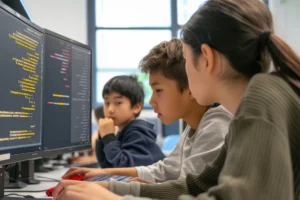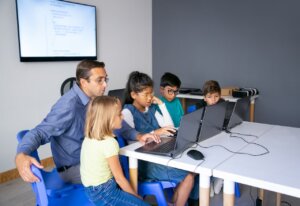Imagine the look on your child’s face at the exact moment their creation whirs to life. The hum of a small motor, the bright glow of an LED, the satisfying click of gears turning in sync—all orchestrated by a code they wrote themselves. This isn’t science fiction; it’s the electrifying, hands-on experience of a robotics class, where the abstract world of programming crashes into the physical world.
If you’re looking for a way to make STEM education tangible and thrilling, robotics classes for kids are the ultimate adventure. This is where ideas you can touch are born. We’ll delve into how robotics makes coding real, what a modern robotics workshop looks like, and how your child can go from building simple machines to competing on a national stage—as seen at the National Robotics Competition in Singapore, a Science Centre–led event that’s launched young innovators since 1999.
The Magic of Robotics: Where Code Gets Physical
For many children, code can feel abstract. Robotics changes everything. When a child programs a robot to navigate a maze, they are physically seeing their logical commands play out in the real world. A for loop isn’t just a concept; it’s what makes the robot’s wheels spin exactly three times. This immediate, tangible feedback makes learning incredibly powerful and deeply intuitive.
The Evolution of the Educational Robot
The tools used in robotics classes have evolved dramatically. What started with simple LEGO® Mindstorms has blossomed into a sophisticated ecosystem of programmable kits. Today’s educational robots come equipped with advanced sensors—ultrasonic for distance, infrared for lines, and even cameras for object recognition—introducing them to the foundational concepts of AI and machine vision.
The Workshop Experience: Brainstorm, Build, Battle!
A robotics class is a whirlwind of hands-on activity. The process begins with a challenge. Students brainstorm designs, build mechanical structures, and then program the “brain” of their machine. Finally, it’s time to test, troubleshoot, and refine. This cycle of building and testing, often done in small teams, teaches not just engineering and coding, but also collaboration, communication, and perseverance.
Taking it to the Next Level: Robotics Competitions
For students who want to test their skills, the world of competitive robotics is an incredible opportunity. Singapore hosts numerous events, like the National Robotics Competition (NRC). These events challenge teams to design, build, and program a robot to solve a complex problem, honing technical skills, strategic thinking, and grace under pressure.
This thrilling journey—from a box of parts to an intelligent machine—is the experience we live for at The Young Maker. Our robotics classes are designed to be an adventure, a hands-on exploration of mechanics, electronics, and programming. We believe the best way to learn is by building, and our curriculum is packed with exciting projects that challenge students to create robots that solve real problems.
Our instructors guide students through every step, fostering an environment where it’s safe to experiment and where every “failure” is a lesson. We provide the tools, the expertise, and the inspiration, whether your child is building their first moving car or preparing for a national competition.
Book a Hands-On Robotics Trial Class and Build Your First Robot!
Don’t let your child just play with technology; let them build it, command it, and innovate with it. A robotics class is an investment in skills that go far beyond the workshop, teaching them to think like engineers, problem-solve like scientists, and create like artists.
The adventure into the world of robotics is waiting. Let your child feel the thrill of creating something that moves, thinks, and accomplishes a task they designed. The first step is to get their hands on the tools.
Frequently Asked Questions (FAQ)
They build a wide range of projects! Beginners might start with simple moving cars or drawing robots. Advanced students can build robotic arms, line-following robots for competitions, or even robots that can identify and sort objects using sensors and basic AI.
Not at all! Most introductory robotics classes for kids teach coding and building fundamentals simultaneously. They often start with block-based coding, making it easy for complete beginners to program their creations right away.
Robotics is fantastic for developing soft skills. It teaches creative problem-solving (how to overcome a design flaw), resilience (rebuilding after a failure), teamwork (collaborating on a complex build), and project management (planning a build from start to finish).
